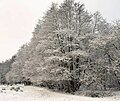 | |
| Headquarters | Curdridge |
|---|---|
| Location | |
| Membership | 25,000 |
| Website | Hampshire and Isle of Wight Wildlife Trust website |
Hampshire and Isle of Wight Wildlife Trust is a Wildlife Trust with 27,000 members across the counties of Hampshire and the Isle of Wight, England. [1]
Contents
- Nature reserves
- Work with other organisations
- Key
- Public access
- Other classifications
- See also
- Notes
- References
- Sources
The trust describes itself as the leading local wildlife conservation charity in Hampshire and the Island with the stated aim of improving conditions for wildlife on land and at sea. The organisation also runs community engagement events helping local people find out about their local wild places. [2]
































